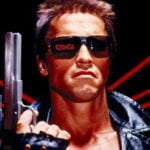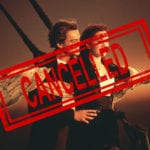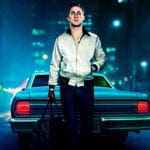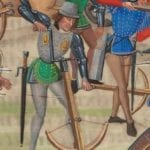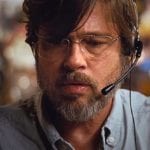 Mysteries
Mysteries  Mysteries
Mysteries  History
History 10 Surprising Stories About the Texas Rangers
 Humans
Humans 10 Philosophers Who Were Driven Mad by Their Own Theories
 Miscellaneous
Miscellaneous 10 Video-Game-Worthy Weapons and Armors from History
 Weird Stuff
Weird Stuff 10 Psychics Who Accurately Predicted Wartime Events
 The Arts
The Arts 10 Pieces of Art Inspired by a Broken Heart
 Health
Health 10 Science Fiction-Sounding New Medical Treatments
 History
History 10 Surprising Facts About the Father of Submarine Warfare
 Space
Space Ten Astonishing New Insights into Alien Worlds
 Weird Stuff
Weird Stuff 10 Bizarre Summer Solstice Rituals Still Practiced Today
 Mysteries
Mysteries Top 10 Haunting Facts About the Ghost Ship MV Alta
 History
History 10 Surprising Stories About the Texas Rangers
 Humans
Humans 10 Philosophers Who Were Driven Mad by Their Own Theories
Who's Behind Listverse?

Jamie Frater
Head Editor
Jamie founded Listverse due to an insatiable desire to share fascinating, obscure, and bizarre facts. He has been a guest speaker on numerous national radio and television stations and is a five time published author.
More About Us Miscellaneous
Miscellaneous 10 Video-Game-Worthy Weapons and Armors from History
 Weird Stuff
Weird Stuff 10 Psychics Who Accurately Predicted Wartime Events
 The Arts
The Arts 10 Pieces of Art Inspired by a Broken Heart
 Health
Health 10 Science Fiction-Sounding New Medical Treatments
 History
History 10 Surprising Facts About the Father of Submarine Warfare
 Space
Space Ten Astonishing New Insights into Alien Worlds
 Weird Stuff
Weird Stuff 10 Bizarre Summer Solstice Rituals Still Practiced Today
Top 10 Best Movies Of The Last 10 Decades
Typically, movie lists on the Internet are centered around genres or finding the best film of a particular year. While those certainly work well enough, they don’t take as broad an approach as possible.
This list takes advantage of the fact that Hollywood has been pumping out movies for over a century. Instead of choosing the best film of a particular year or genre, the films on this list were selected from the decade they were released.
Finding the right movie from each decade considers a film’s box office draw, critical acclaim, awards received, and cultural impact. Odds are, many won’t agree with these picks, so load the comments with the movies you think should be at the top of a particular decade.
Top 10 Movies Better Than The Best
10 1920s—Metropolis
You might not think of the 1920s as a decade of outstanding cinematic achievement, but this was when movies like Battleship Potemkin, The Cabinet of Dr. Caligari, and Nosferatu were released. Feature films were coming into their own by proving the technology was no passing fad. They may have been silent, but that limitation was overcome through an entirely visual means of storytelling.
The best film of the 1920s is Fritz Lang’s gorgeous expressionist sci-fi drama, Metropolis. This was one of the pioneers of the science-fiction genre. While it lacked in sound, it more than made up with its stunning visualization of a dystopian urban society. Metropolis took 17 months to complete, and the filming process was something of a nightmare.
Despite this, Lang managed to complete the film with nearly 2.5 times the original budget. The film pioneered numerous visual effects techniques, including the Schüfftan process (named after the film’s VFX artist, Eugen Schüfftan), which used mirrors to reflect actors onto miniature sets.
Metropolis did not do well upon release. H.G. Wells reviewed the film, saying it was “foolishness, cliché, platitude, and muddlement about mechanical progress and progress in general.” Decades later, several restorations of the original film have brought it before modern eyes, and it has since been recognized as one of the greatest movies ever made.
9 1930s—The Wizard Of Oz
Some of the greatest films of all time were released in the 1930s, including Duck Soup, King Kong, Bringing Up Baby, M, Gone with the Wind, and City Lights. While there were tons of immortal classics from the decade, the movie that stands above the rest is 1939’s The Wizard of Oz.
When it was released, The Wizard of Oz was already the eighth adaptation of L. Frank Baum’s classic tale. While some of the stage plays and silent films were exceptional, they don’t hold a candle to the musical directed by Victor Fleming.
The film’s use of black & white film being interrupted with glorious Technicolor was only one of the fantastic elements that make the movie stand out among its peers. It’s probably safe to say that most people alive today have little to no experience watching movies from the 1930s, but there’s a caveat to that statement.
Odds are, nearly everyone has seen The Wizard of Oz at least once in their lives, which easily makes it the most influential movie of the decade. The Library of Congress declared that it has “been seen by more viewers than any other movie.”
8 1940s—Citizen Kane
The 1940s kicked off with Charlie Chaplin’s masterpiece, The Great Dictator, and that was just the beginning. Other notable films from the decade include Double Indemnity, It’s A Wonderful Life, The Treasure of the Sierra Madre, The Grapes of Wrath, and Casablanca. There’s tons to love about the 1940s, but you can’t neglect what many call the greatest movie ever made.
When Orson Welles narrated The War of the Worlds, he attracted the attention of RKO Pictures. The studio wanted to work with him so badly that they offered him a contract to act, produce, write, and direct two films. This was something the reluctant Welles couldn’t resist, and his first film was Citizen Kane.
Welles worked with Herman J. Mankiewicz to write a semi-autobiographical film based on the life of William Randolph Hearst. The story of Charles Foster Kane and his beloved “Rosebud” was unleashed upon the world in 1941. Like many beloved classics, it didn’t do remarkably well upon release.
It was a critical success, but a box office bomb, having failed to recoup its costs. It didn’t begin to receive the critical acclaim it now enjoys until the mid-1950s. Since that time, it’s become the best film of all time, according to the AFI, most film critics, and directors.
7 1950s—Sunset Blvd.
In a decade dominated by the likes of Alfred Hitchcock, Stanley Kubrick, and Igmar Bergman, finding the right movie to label as the #1 film of the decade is no easy task. After all, this was the decade Some Like It Hot, Singin’ in the Rain, North By Northwest, and Rear Window were released.
Each of those films stands the test of time, but the best the decade offered comes from director Billy Wilder’s classic 1950 film, Sunset Blvd. This is one of those movies that you may not have seen, but you’ve definitely seen clips of, as it’s one of the best black comedy film noir films ever produced.
The movie centers around Joe Gills, a screenwriter who’s drawn into the life of a former silent-film star, Norma Desmond. It features some excellent cameos of silent movie stars from the previous era to sell it, and it totally works, thanks to Buster Keaton, Anna Q. Nilsson, and H.B. Warner.
Sunset Blvd. was highly praised when it was released, and it’s often considered one of the best movies of all time. It was among the group of the first films selected for preservation in the National Film Registry, and there’s little wonder why.
6 1960s—Psycho
The 1960s saw the rise of science-fiction as a more approachable and viable artform for a wider audience via 2001: A Space Odyssey. It also featured some of the best westerns ever made, thanks to the rise of the “spaghetti western” with films like The Good, the Bad, and the Ugly. Other notable films include Dr. Strangelove, Lawrence of Arabia, and Rosemary’s Baby.
There were definitely some amazing films produced throughout the decade. Still, the one that easily clinches the top spot is none other than Alfred Hitchcock’s legendary classic, Psycho. Hitchcock’s psychological thriller is a master class in suspenseful storytelling, and it’s easily one of the best cinematographic films of all time.
If there was any doubt about Hitchcock’s storytelling before Psycho, the one or two people who filled that group were silenced by this movie. It’s easily the director’s most famous film, and it often tops the list as his best movie, though Rear Window and North By Northwest aren’t far behind it.
Psycho enjoyed a stellar box office performance, making $32 million off a budget of little more than $800,000. It’s often considered to be one of the greatest (and first) slasher films ever made. Its influence can be seen in every significant slasher/thriller released since 1960.
5 1970s—The Godfather
There were tons of notable films released in the 1970s, including Star Wars, Annie Hall, Alien, Apocalypse Now, and A Clockwork Orange. This was the decade of The Sting, Monty Python and the Holy Grail, and Rocky, so choosing the best film is no easy task. Still, the greatest film of the 1970s is and must be Francis Ford Coppola’s The Godfather.
If you can get through film school without watching this movie, there’s a good chance you were in a coma for a significant amount of time. It’s one of the most studied and beloved films of all time, and it’s an epic masterpiece. The film chronicles the Corleone family from 1945 to 1955, which sees the rise of Michael Corleone as the family’s new Don.
The movie has everything from violence to romance and everything possible in-between. It received universal acclaim for every aspect of the film, with a significant amount of praise heading straight to Marlon Brando, helping to revitalize his career. It’s because of The Godfather that he wound up in Apocalypse Now, Superman: The Movie, and Last Tango in Paris.
The Godfather’s influence on modern cinema and popular culture is widespread. It’s often considered one of the greatest movies of all time while also standing as the best gangster movie ever made. Its sequel came out in the same decade, and while it’s absolutely amazing, it all started with The Godfather.
4 1980s—Raiders Of The Lost Ark
The 1980s was the decade that gave the world The Empire Strikes Back, Labyrinth, Beetlejuice, The Princess Bride, and The Goonies. There were terrific fantasy, sci-fi, comedy, and family films, but the one that easily beats out the competition is Steven Spielberg’s Raiders of the Lost Ark.
Harrison Ford’s starring role as a college professor who moonlights as an artifact hunter/Nazi fighter is more than an epic adventure — it’s a hell of a lot of fun! The movie has romance, action, adventure, and comedy all mixed into a tale of biblical archaeology, and it works. It wasn’t just a great movie; it also gave the world an amazing character.
The movie was a huge success when it was released in 1981. It had a significant impact on cinema released throughout the decade, which saw multiple imitators in films like Romancing the Stone. That influence continued into the following decade, with movies like The Mummy and Indiana Jones’ influence continues to this day.
Raiders of the Lost Ark created a franchise, and it’s one of the best movies of its genre. The decade featured two sequels, both of which were just as successful as the first, and while the fourth movie wasn’t as well-received, it won’t be the last. A fifth film is slated for release in 2022.
3 1990s—The Shawshank Redemption
In a decade that gave the world Pulp Fiction, Schindler’s List, Forrest Gump, Fight Club, The Silence of the Lambs, and plenty more, determining the best film of the ’90s is no easy task. The 1990s were full of intense action, beautifully written dramas, evocative thrillers, and gorgeous sci-fi, but the film that takes the decade has got to be The Shawshank Redemption.
Frank Darabont’s adaptation of Stephen King’s novella, Rita Hayworth and Shawshank Redemption, tells the story of Andy Dufresne, a man convicted for murdering his wife and her lover. The film follows Andy’s life in Shawshank Prison through the interactions with the friends and enemies he makes along the way, all while planning his escape.
That escape was something that came as a surprise to the warden, his friends, and the audience. Darabont managed to keep the audience guessing, and just when it looks like Andy is about to commit suicide, he pulls one over on everyone. It’s masterful storytelling of a beautiful story set in a horrible place, which isn’t easy to do.
The Shawshank Redemption did horribly in its theatrical release, but it managed to recieve a ton of award nominations. This resulted in a theatrical re-release to capitalize on the acclaim, which helped. Still, it really made its money in the home video rental market. These days, it’s regularly broadcast on television and remains one of the best and most popular films of the ’90s.
2 2000s—Spirited Away
The 2000s gave the world the MCU via Iron Man, heartache over the first five minutes of Up, and the beginning of Peter Jackson’s magnum opus in The Lord of the Rings: The Fellowship of the Ring. Batman went up against the Joker in The Dark Knight, and the world saw Scarlett Johansson stun audiences in Lost in Translation.
There were a plethora of incredible films kicking off the new millennia. Still, the beauty, scope, and enchantment of Hayao Miyazaki’s Spirited Away takes the prize as the best movie of the decade. Miyazaki consistently produced fantastic films for years, but it took Spirited Away for the majority of westerners to take notice.
The story centers around Sen (Chihiro), who takes a job working at a witch’s bathhouse. She does this after the witch (Yubaba) turns her parents into pigs. All she wants to do is find a way to undo their transformation and escape the world of Kami to return to the human world.
Like all of Miyazaki’s films, Spirited Away perfectly expresses the notion of “every frame a painting,” as it is absolutely beautiful. Nothing takes the screen’s time without purpose, and the story has a way of drawing the viewer in through its magical appeal and gorgeous presentation of Japanese Shinto folklore. It won the Academy Award for Best Animated Feature, and there’s little wonder as to why.
1 2010s—Boyhood
You may have thought you’d find movies like Avengers: Endgame, Get Out, The Social Network, or The Grand Budapest Hotel taking the top spot of the past decade. While those movies and many more were exceptional, the leader of the last ten years is a relatively obscure film from Richard Linklater called Boyhood.
Linklater proved he had no problem playing the long game when it came to filmmaking with Boyhood. The movie took him 12 years to shoot, but it wasn’t shot consecutively. Instead, the director managed to convince Ethan Hawke, Patricia Arquette, Ellar Coltrane, and others to sign on for a 12-year production that saw them return to film their parts over the years.
What is left is a true coming-of-age drama that actually depicts a young boy’s coming-of-age from when he was six years old to becoming 18. Taken individually, each segment isn’t necessarily special, but when they’re examined as a whole, it’s truly a remarkable film. Watching Coltrane’s Mason grow from youth to a young Texas teenager feels natural in Boyhood.
In a decade dominated by superhero movies and high-intensity action stories, Boyhood managed to bring in audiences for its analysis of what makes us human. The movie gained media attention because of how it was filmed, but it excelled despite that, easily becoming the best film of the decade.
Top 10 Remakes Better Than The Original Movies

